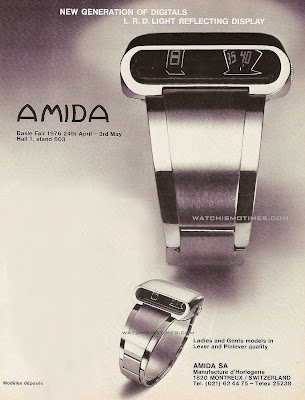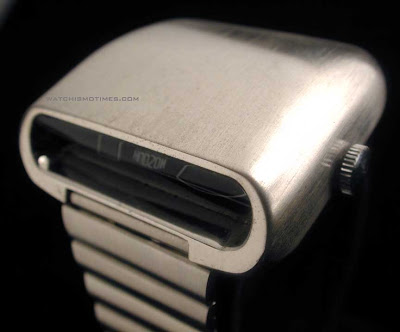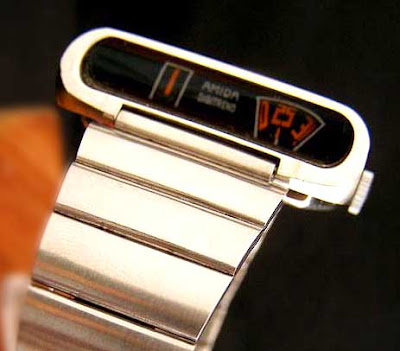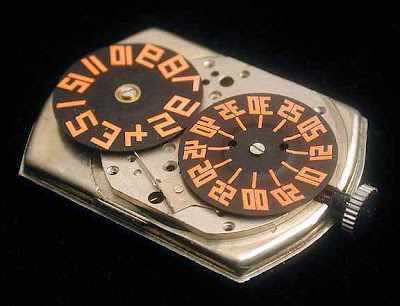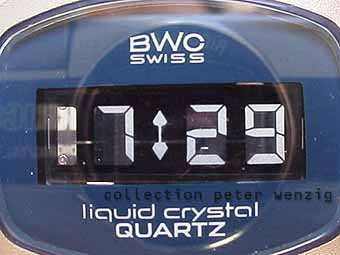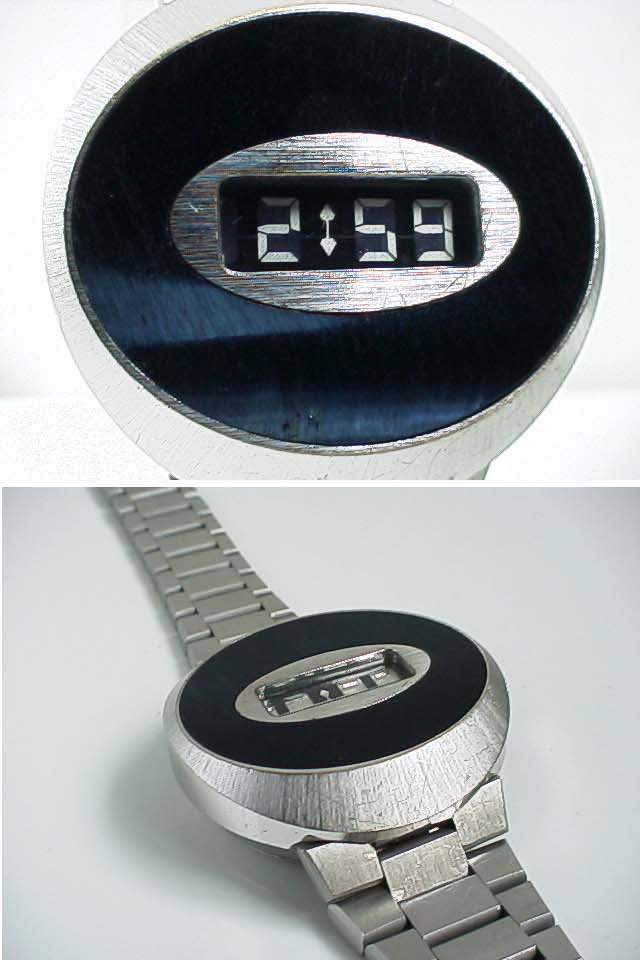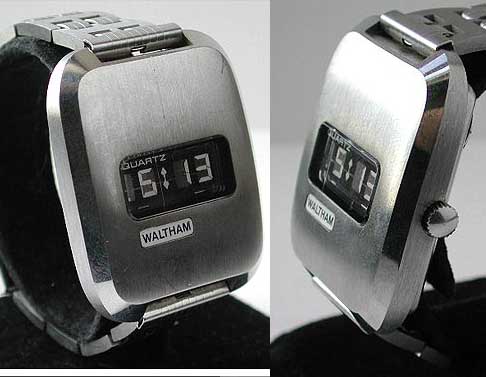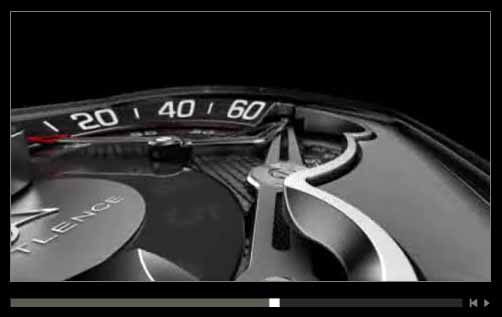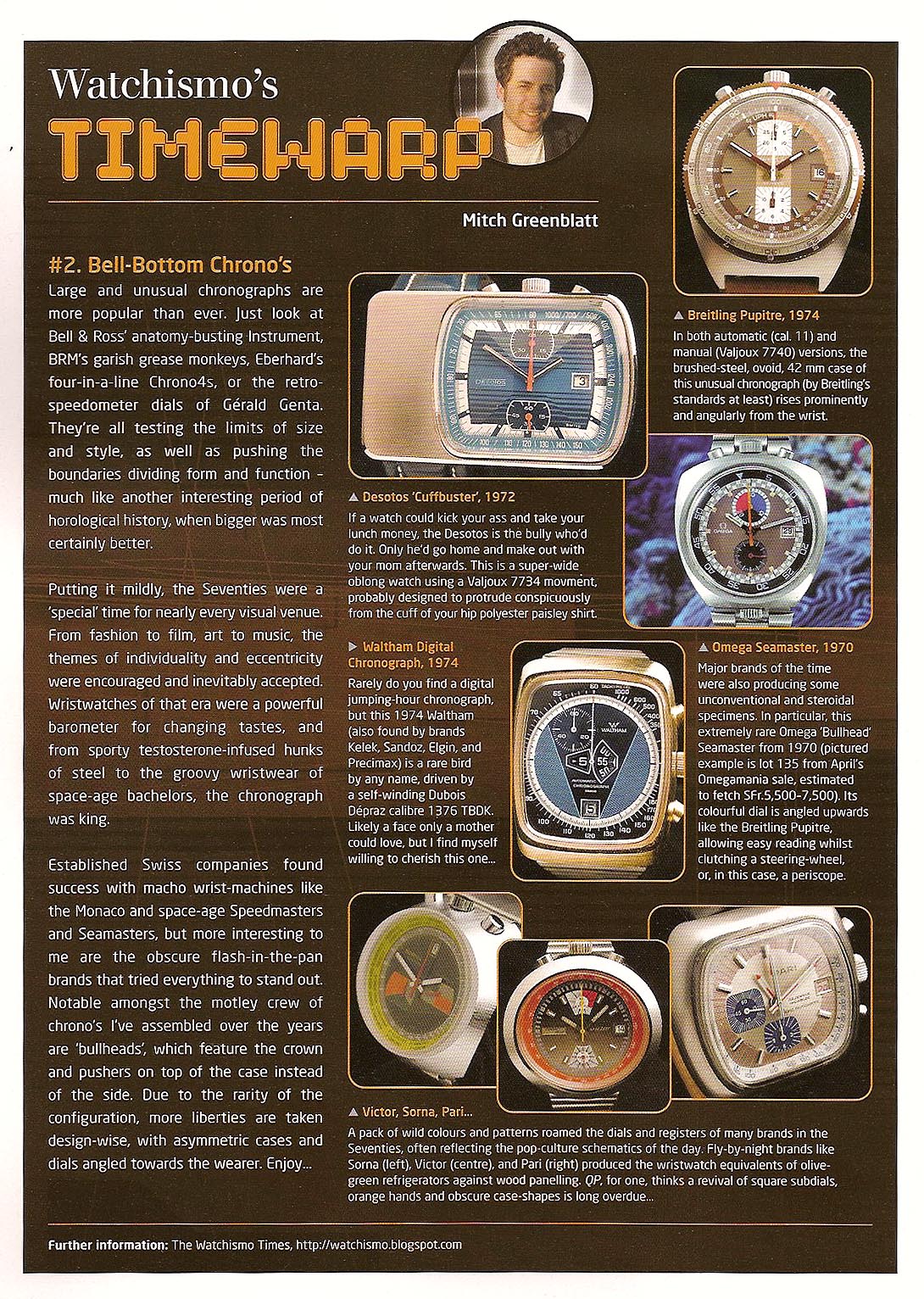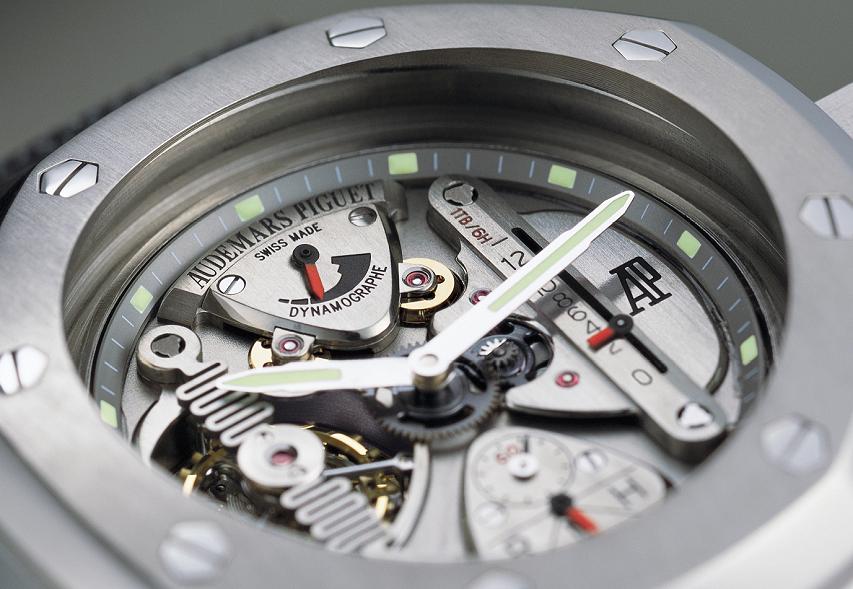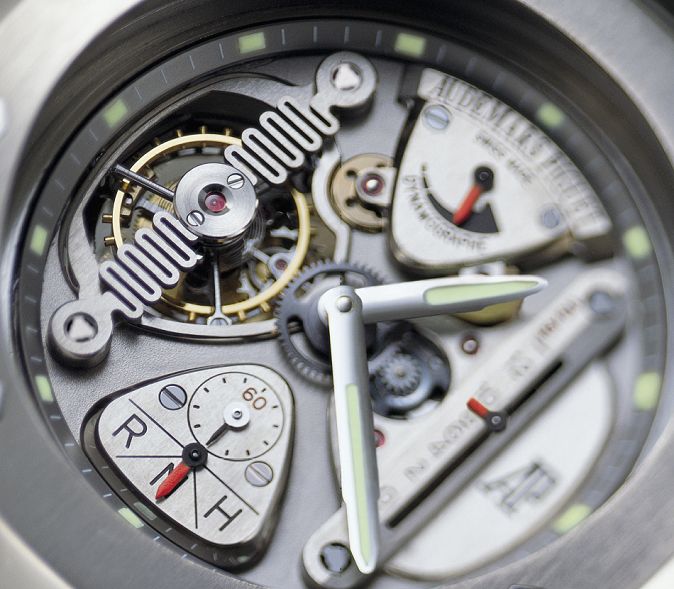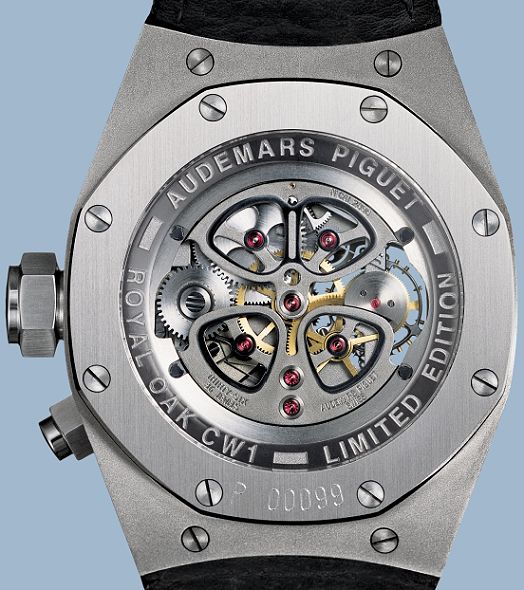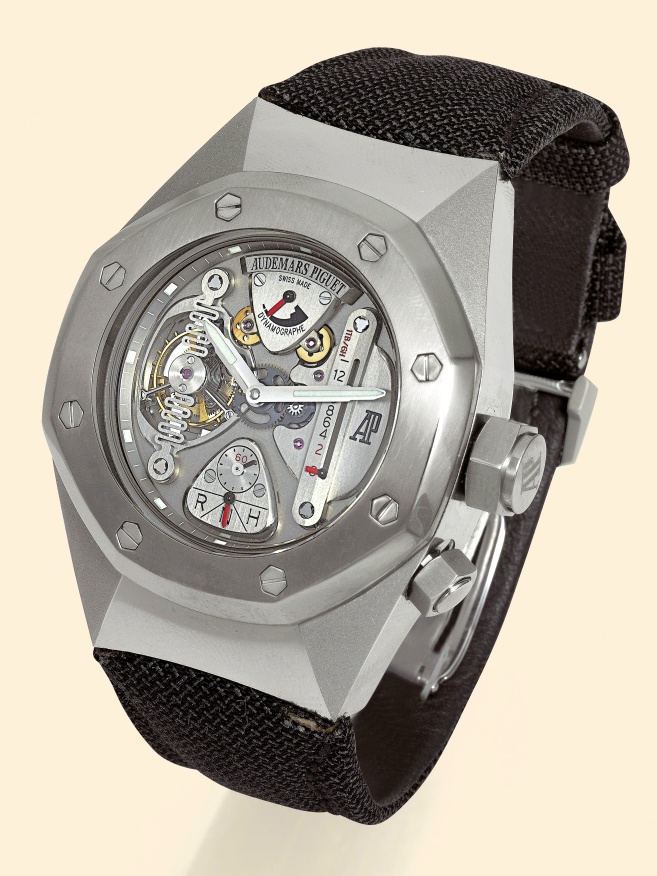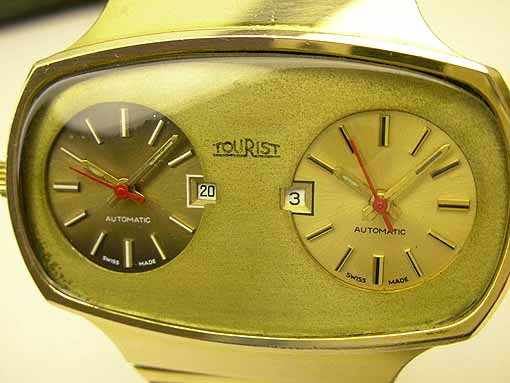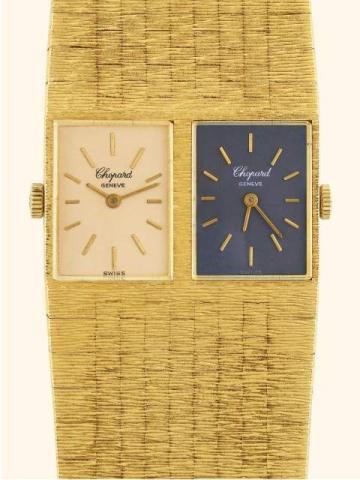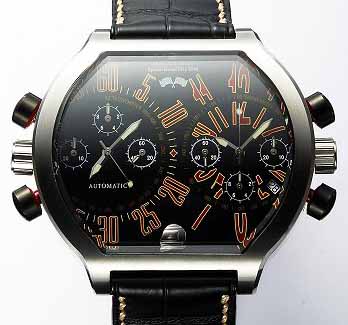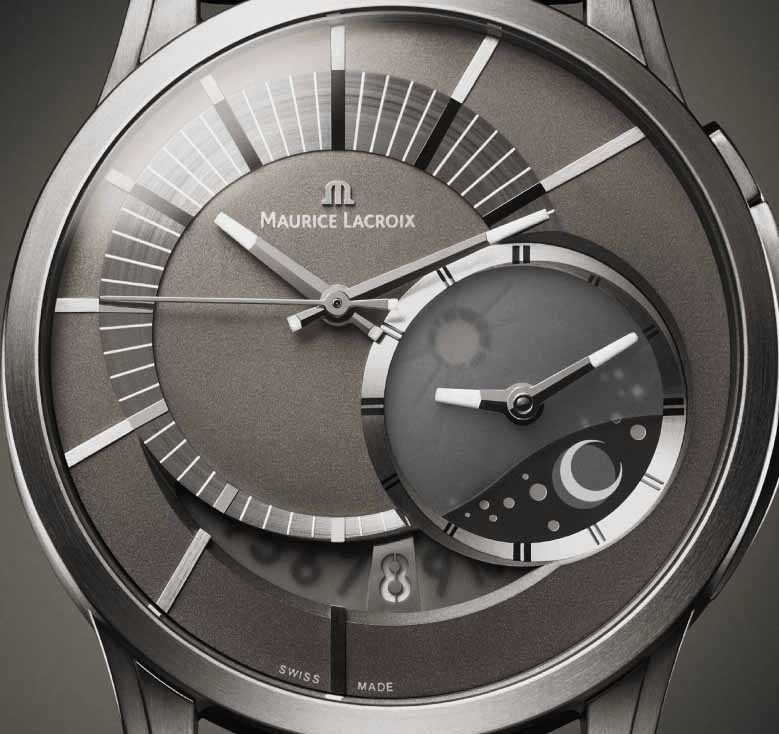 The Dynamic Scattering Liquid Crystal Display, the precursor to the common gray 'Field Effect' LCD displays of today. Only produced for two years, they are rarer than most other vintage digital LED watches of the seventies. Digits were low contrast silver and only really visible when looking directly at the watch. Pulling and twisting the crown in either direction sets the watch but you must hold it as it advances just one minute at a time.
The Dynamic Scattering Liquid Crystal Display, the precursor to the common gray 'Field Effect' LCD displays of today. Only produced for two years, they are rarer than most other vintage digital LED watches of the seventies. Digits were low contrast silver and only really visible when looking directly at the watch. Pulling and twisting the crown in either direction sets the watch but you must hold it as it advances just one minute at a time.
Relatively obscure to most collectors, the Dynamic Scattering LCDs were difficult to read, housed in giant cases and frustrating to set time. That's exactly why they're so damn cool.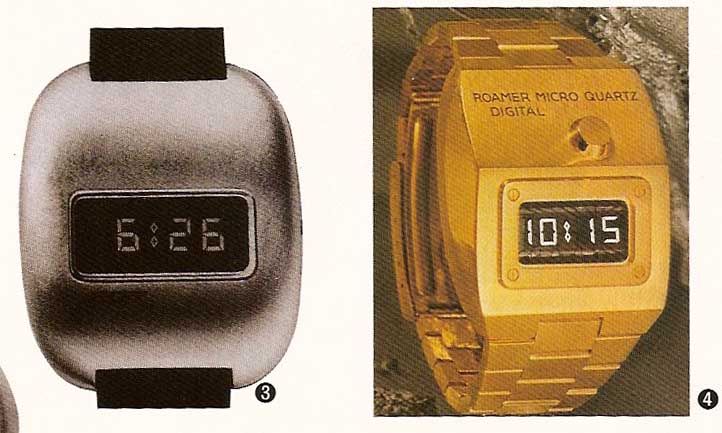
Mathey Tissot (Left)
Roamer MicroQuartz (Right)
(kinda boring so feel free to skip down to the watch photos below)
Liquid crystals are organic substances that reflect light when voltage is applied.
In a watch display, the liquid crystal material is sandwiched in between two layers of glass. A transparent electrode pattern has been applied on the inner surfaces of the glass in the shape of the digital bars used in the time display. The integrated circuit applies voltage to the appropriate segments of the display, which reflect the ambient light to display the time. These molecules are affected by the voltage in such a way that they contrast sharply with the molecules in the rest of the display that do not receive current. Because LCDs reflect, rather than emit, light, the voltage requirements are quite low.
Scientists have known about liquid crystals since the 1880s.
Scientists have known about liquid crystals since the end of the 19th century, but applications appeared only in the 1960s. Friedrich Reinitzer and Otto Lehmann first noted their behavior and named them in the 1880s. European laboratory scientists came to understand the physics and chemistry of liquid crystals during the 1930s, but it wasn't until the 1960s that investigations began in the United States in both basic research and practical uses for liquid crystals.
LCD watches first appeared in 1970, but the display required improvement.
The first liquid crystal displays were developed in 1968 by a research group at RCA's David Sarnoff Research Center, headed by George Heilmeier. This display was based on the dynamic scattering mode. In 1970 Nunzio Luce, Louis Zanoni, George Graham, and Joel Goldmacher left RCA and joined Optel Corporation, where they developed the first LCD display for commercial purposes, including the digital watch display.
Because the DSM LCDs suffered from relatively high power consumption, limited life, and poor contrast, the search continued for a workable LCD. James Fergason at Kent State invented an improved display based on the twisted nematic field effect in 1969. Fergason left Kent State and formed ILIXCO Corporation to manufacture his display. The first LCD watch with an ILIXCO display was marketed by Gruen. The field effect display is the kind most frequently found in today's LCD products.
Much more can be found in the Pieter Doensen book, "Watch - History of the Modern Wristwatch" -->Link
A visual history of some Dynamic Scattering LCD watches 1972-1974;
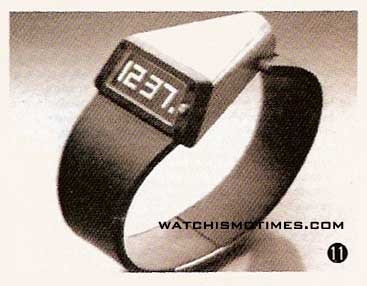
Unknown Sideview DS LCD
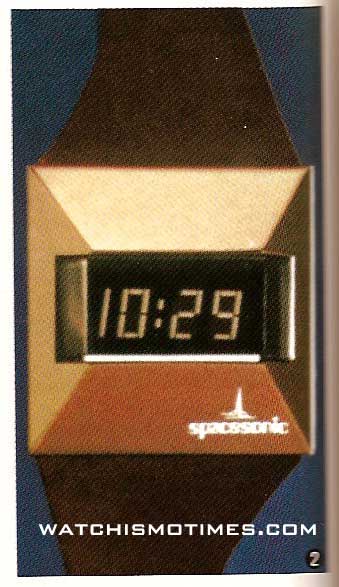
Very rare Spacesonic (Spaceman Audacieuse)
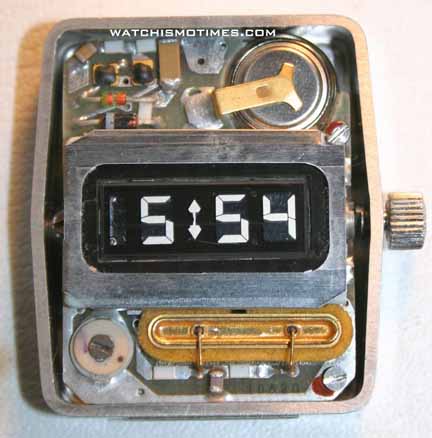
DS LCD Quartz Module

BWC, Milus, Wyler, Glycine, Ditronic
Other brands that produced DS LCD;
Microma, Optel, Elgin, Nepro, Texas Instruments,
Silvania, Rodania, Titus, Helvetia, Computime,
Richard, Pallas, Sandoz and Zodiac
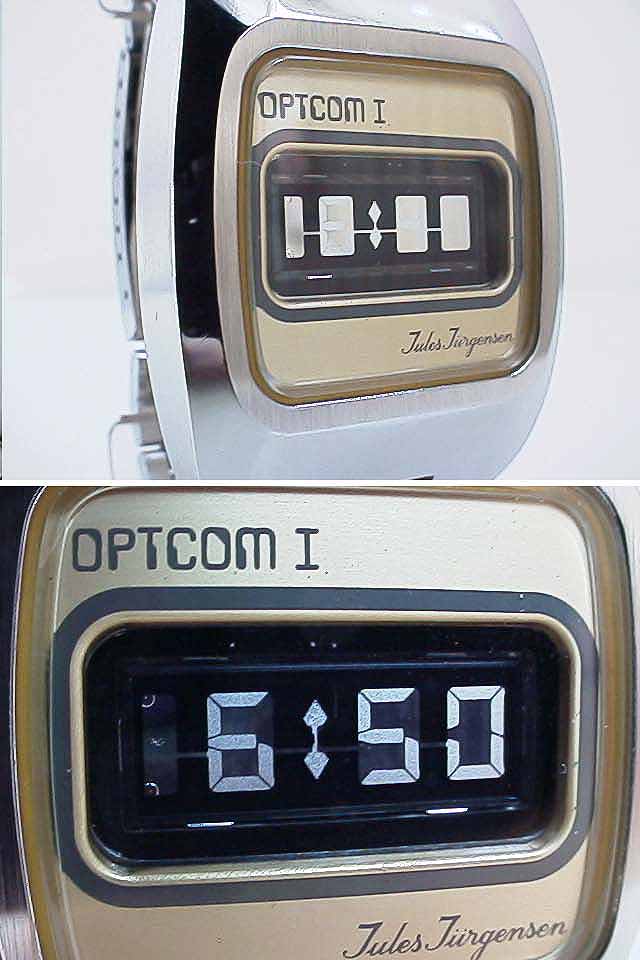
Jules Jurgensen
OPTCOM 1Top photo shows the low contrast silver display
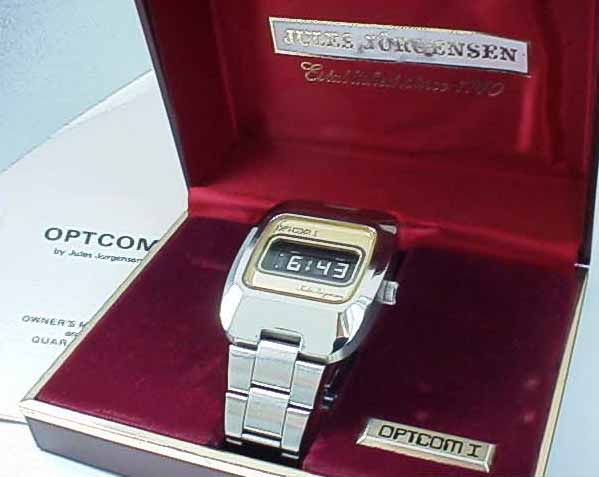

Longines / Swissonic 2000
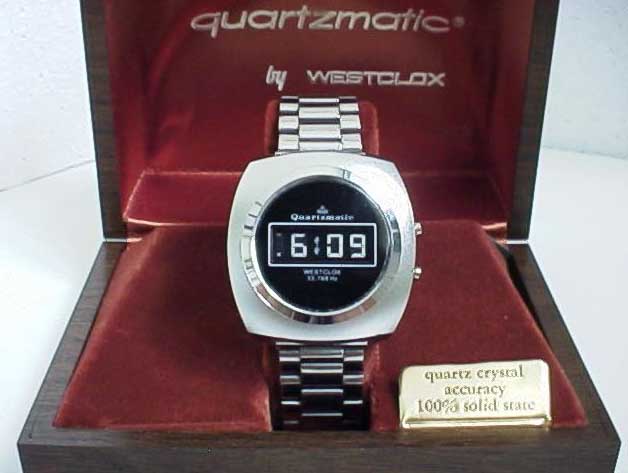
Westclox Quartzmatic
|
Watchismo Blog |
Watchismo Shop |
Contact Us |
Subscribe |
